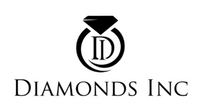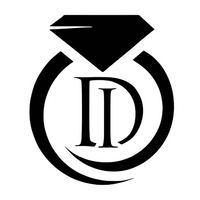Learn About Colored Diamonds
Diamonds in the normal color range are colorless through light yellow and are described using the industry’s D-to-Z color-grading scale. Fancy color diamonds, on the other hand, are yellow and brown diamonds that exhibit color beyond the Z range, or diamonds that exhibit any other color face-up. These rare specimens come in every color of the spectrum, including, most importantly, blue, green, pink, and red.
Gem diamonds in the D-to-Z range usually decrease in value as the color becomes more obvious. Just the opposite happens with fancy color diamonds: Their value generally increases with the strength and purity of the color. Large, vivid fancy color diamonds are extremely rare and very valuable. However, many fancy diamond colors are muted rather than pure and strong.
Blacks, grays, and fancy whites are considered fancies, too. Some have been fashioned into gems. The 67.50-carat Black Orloff diamond, named after the Russian Princess Nadia Vyegin-Orloff, is the most well-known example.
Color
In diamonds, rarity equals value. With diamonds in the normal range, value is based on the absence of color, because colorless diamonds are the rarest. With fancy color diamonds—the ones outside the normal color range—the rarest and most valuable colors are saturated pinks, blues, and greens. In all cases, even very slight color differences can have a big impact on value.
Compared to fancy yellows and browns, diamonds with a noticeable hint of any other hue are considerably more rare. Even in light tones and weak saturation, if they show color in the face-up position, they qualify as fancy colors. Red, green, and blue diamonds with medium to dark tones and moderate saturations are extremely rare.
Grading fancy color diamonds is complex and specialized, and it takes highly trained laboratory graders to complete the process accurately.
Clarity
With fancy color diamonds, color is the dominant value factor. Even diamonds with numerous inclusions that result in a low clarity grade are prized by connoisseurs if they display attractive face-up color. Of course, inclusions that threaten the gem’s durability can lower a fancy color diamond’s value significantly. Fancy color diamonds can exhibit color graining, which is considered an inclusion.
Cut
Size and shape are two aspects of cut that can influence diamond color. The larger a diamond is, or the deeper its pavilion, the farther light can travel in it. This can often lead to a richer, more intense color.
The style of the cut can also influence color. Cutters discovered that certain styles—typically mixed cuts like the radiant—can intensify yellow color in diamonds that are toward the lower end of the D-to-Z color-grading scale. When carefully fashioned as radiant cuts, many yellow-tinted stones—at one time called “cape” by the trade—can become fancy yellows when viewed face up. This perceived improvement in color increases the price per carat. As an added benefit, the radiant style provides higher yield from the rough than a standard round brilliant.
Carat Weight
As with diamonds in the normal D-to-Z color range, large fancy color diamonds are rarer and more valuable than small ones.







